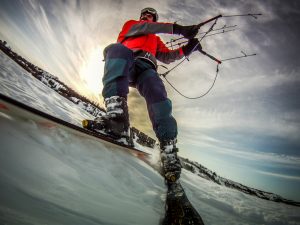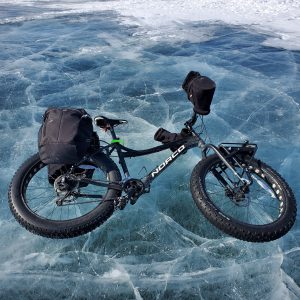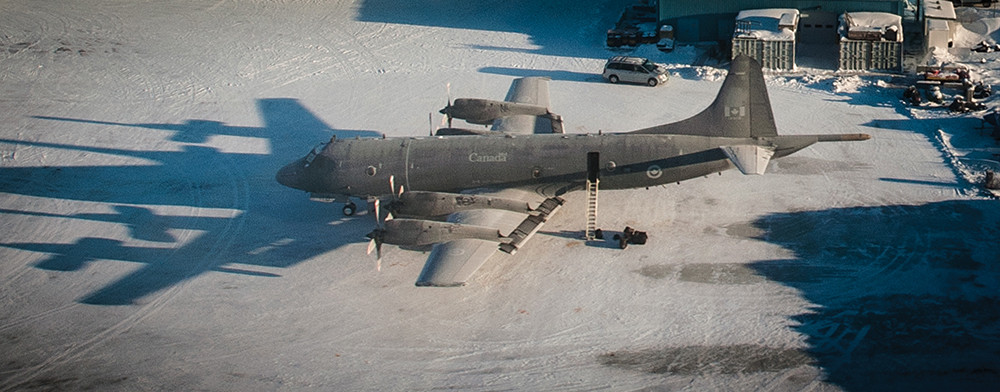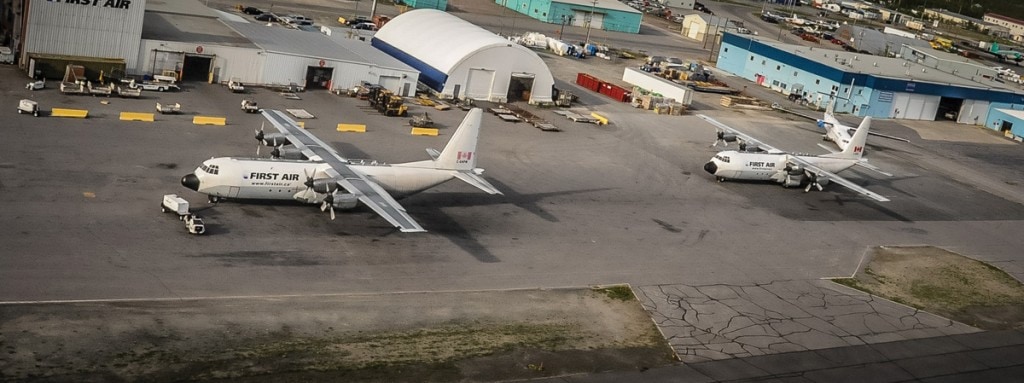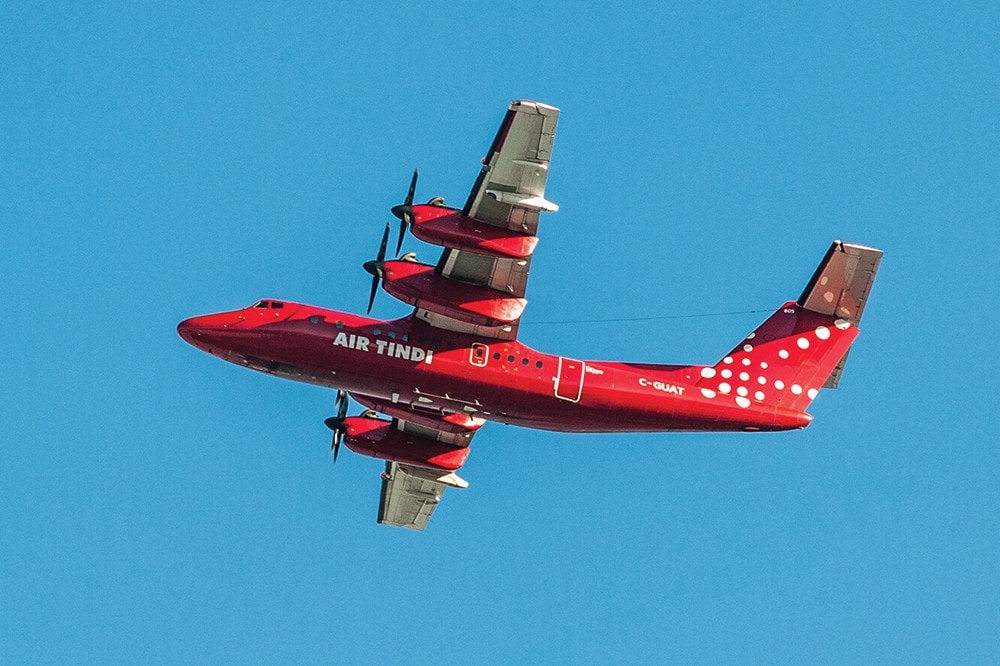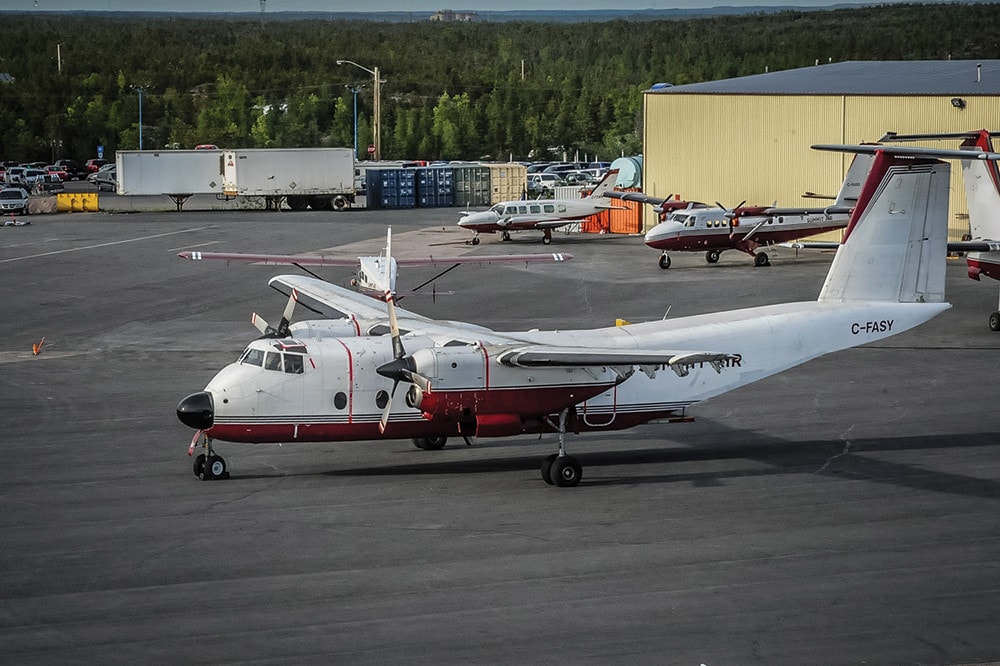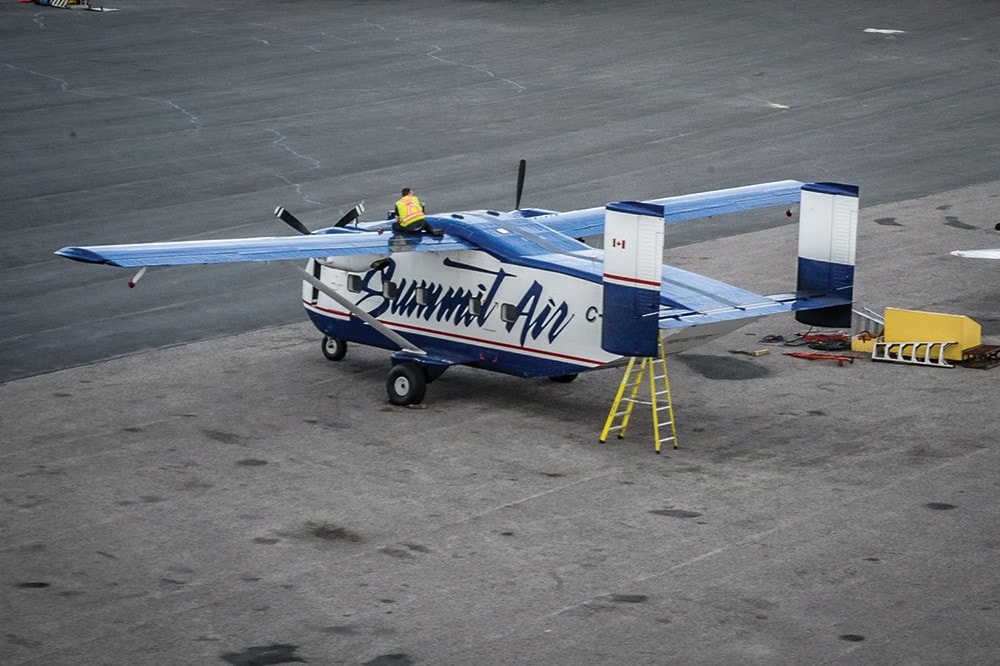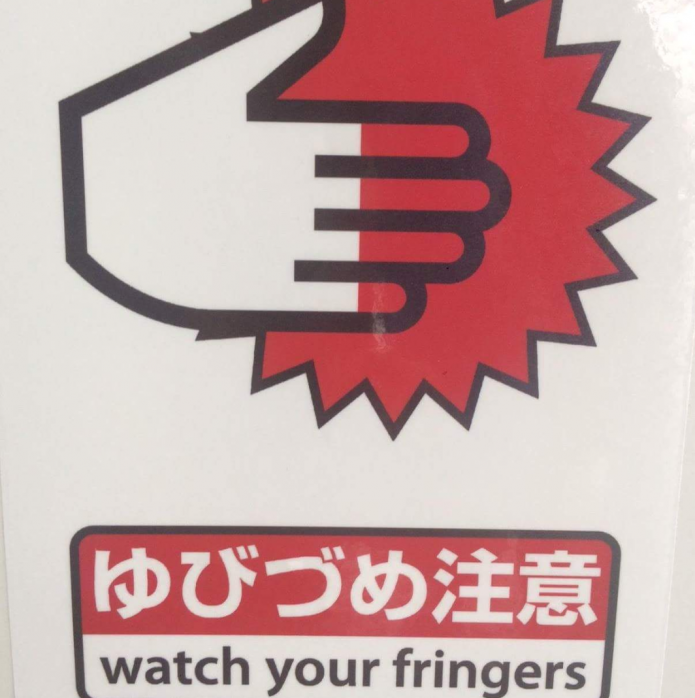It started with a a thank you card from a friend for helping her with some house maintenance. I can’t actually remember what i had helped with. At the time, this card seemed reasonably reasonably humorous.
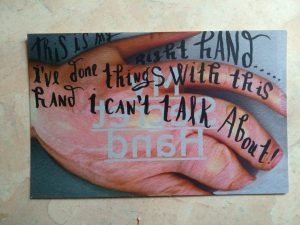
Little was I to know what was about to happen.
I do recall that I had recently found toy dinosaur (T-Rex) in the park. It sat menacingly on the picnic table where I ate lunch, with its mouth ajar showing all its teeth. What fun I had with it. Posing it as if it had eaten a piece of my lunch, and even a piece of my plate which had an appropriately sized piece removed.
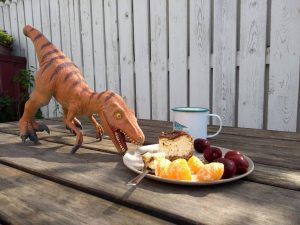
Ok – Yellowknife !. I know that we are at the end of the road on the edge of the middle of no-where. Where mosquitos are the size of a crow, the fish – northern pike resemble pre-historic sharks, and now these guys pop in for a visit while I am eating my lunch !. Talk about un-invited guests !. Lol. (July 25, 2018)
And having a ‘battle’ with a vintage wooden model ship in the garden.
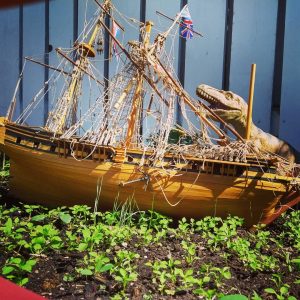
Epic battle: HMS Unicorn (1790) vs T-Rex in my garden (a bed of weeds). Not really what I want to see. #mygardenisabattlefield (June 29, 2018).
Be warned – the following images are graphic !
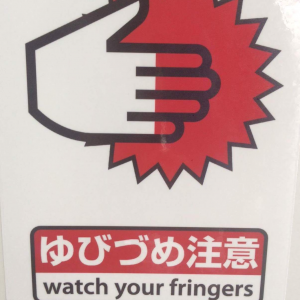
Saturday July 28, 2018. The day my hand got bitten by the dinosaur.
Nealy completed a small storage shed, and adding trim. I wanted to ‘rip’ a piece of wood to reduce the width. It seemed simpler to hold the circular saw in my left hand and hold the wood with my right hand. Seemed like a good idea at the time. Part way though the cut the saw blade was pinched by the wood. On table saws there is piece of thin metal behind the blade to prevent pinching. The blade on circular saws rotates upwards into the uncut wood. Within a blink – the circular saw was suddenly flung backwards towards me. I knew right away that something was wrong.
As the saw moved backwards it ran over my thumb that had slightly crossed over the previously cut wood.
Blood everywhere. At first i thought that my body had been struck by the blade. Only my thumb – but how much was gone. I couldn’t see as blood was everywhere.
Gone ?. My mind flashed to the thoughts of What can a person do with no thumb ?. No more hobbies, paddling, photography…
I found some rags in the workshop to slow the flow of blood and went in the house. My the time i got inside the blood had soaked the rags. Tea towels were next.
I was moving all over the house and was leaving a trail of blood.
Take control of yourself …take control of your self.
Eventually I sat on the floor, closed my eyes and tried to slow my heart rate as each heart beat could be seen by a new drop on the floor.
A few minutes and the decided i had to go to the hospital. I drove myself, and drive a standard. Shifting with the palm of my hand and baby finder. At emergency ….”Hi – Yes- I cut off my thumb…”
The nurse asked – “Do you have the piece ?”. A minute later i was a calling a friend – “Hey can you do me a favor…”. Sure enough, he and his six years old son found the piece and delivered it to the hospital.
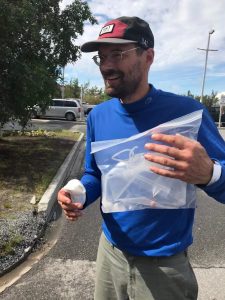
Steve and his piece of thumb after being delivered to the hospital.
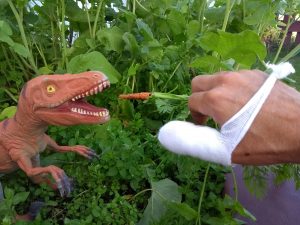
My luck ran out. The teeth got me. It would have been a good and funny story if the dinosaur in my garden nipped off the tip of my thumb while teasing him with a carrot.
But it wasn’t. Other teeth got me. Damn you circular saw ! (July 29, 2018).
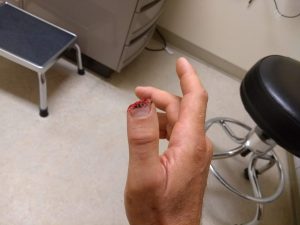
First look at the squared off thumb…July 30, 2018.
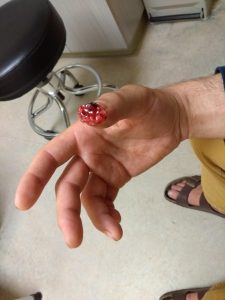
First look at the squared off thumb…July 30, 2018.
August 12 i flew to the Netherlands on a pre- planned trip. Had the circular struck bone, the trip would have had to be cancelled. Missed it by that much…
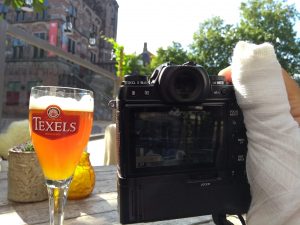
Yes – I can still hold a camera and drink beer !.
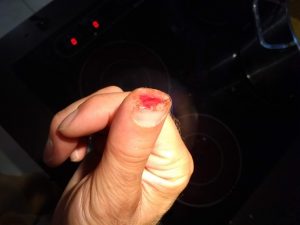
Healing. (August 20, 2018).
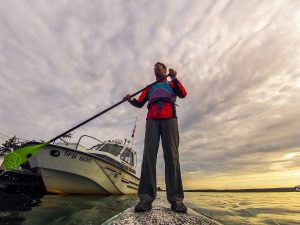
Paddle boarding. (August 26, 2018).
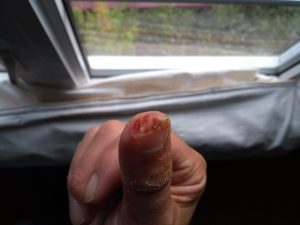
More Healing. (September 14, 2018).
It took approximately 2 months to get full mobility back. The skin grew back, fingerprint too. Now, almost 4 years later, other than being a bit shorter, and less sensitivity at the tip life is now almost back to normal.
